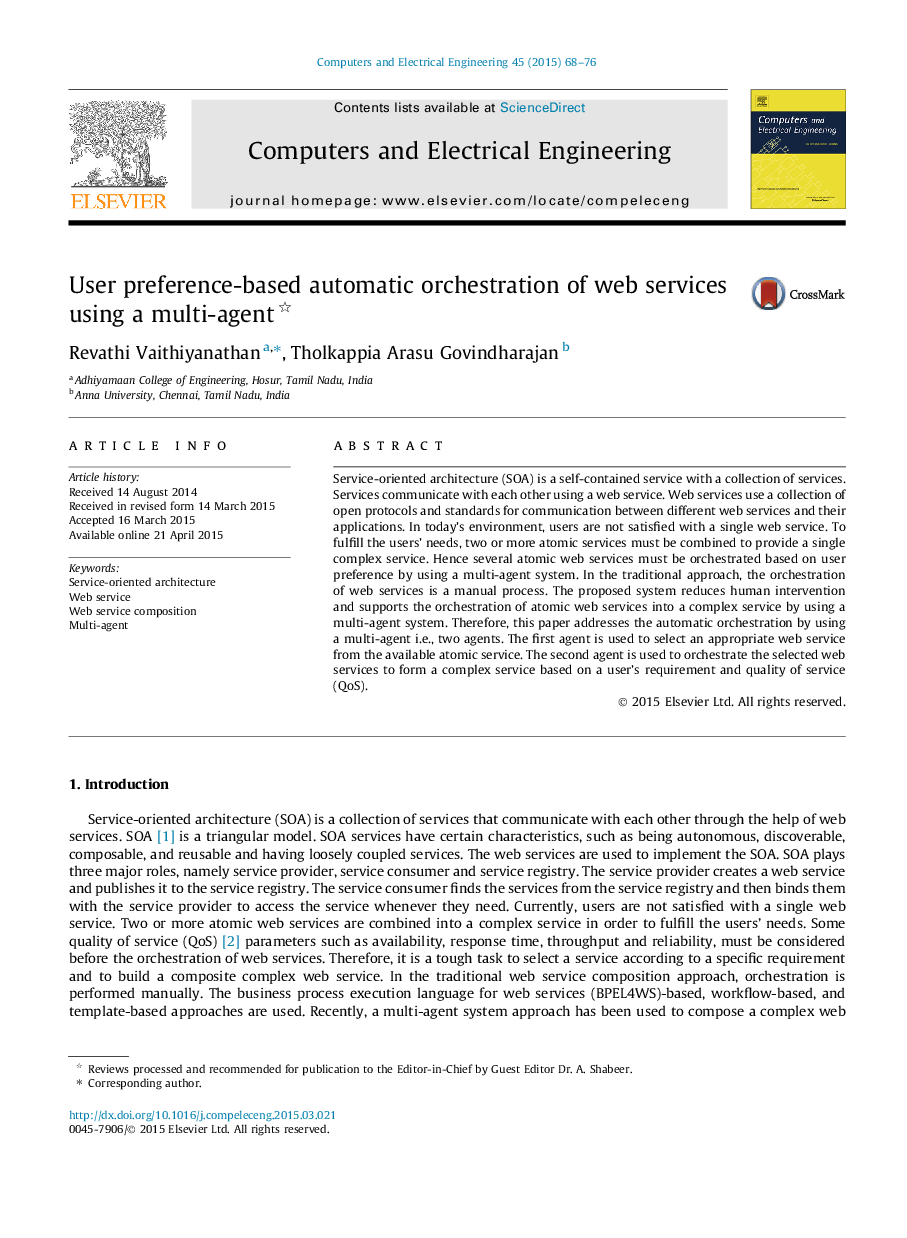| کد مقاله | کد نشریه | سال انتشار | مقاله انگلیسی | نسخه تمام متن |
|---|---|---|---|---|
| 453666 | 694993 | 2015 | 9 صفحه PDF | دانلود رایگان |
• The proposed approach uses a multi-agent system to automate the process.
• It increases the overall system performance over traditional approach.
• It supports several QoS parameter such as reliability, throughput, response time and reusability.
• The graph depicts the response time between proposed and traditional approach.
Service-oriented architecture (SOA) is a self-contained service with a collection of services. Services communicate with each other using a web service. Web services use a collection of open protocols and standards for communication between different web services and their applications. In today’s environment, users are not satisfied with a single web service. To fulfill the users’ needs, two or more atomic services must be combined to provide a single complex service. Hence several atomic web services must be orchestrated based on user preference by using a multi-agent system. In the traditional approach, the orchestration of web services is a manual process. The proposed system reduces human intervention and supports the orchestration of atomic web services into a complex service by using a multi-agent system. Therefore, this paper addresses the automatic orchestration by using a multi-agent i.e., two agents. The first agent is used to select an appropriate web service from the available atomic service. The second agent is used to orchestrate the selected web services to form a complex service based on a user’s requirement and quality of service (QoS).
Figure optionsDownload as PowerPoint slide
Journal: Computers & Electrical Engineering - Volume 45, July 2015, Pages 68–76
